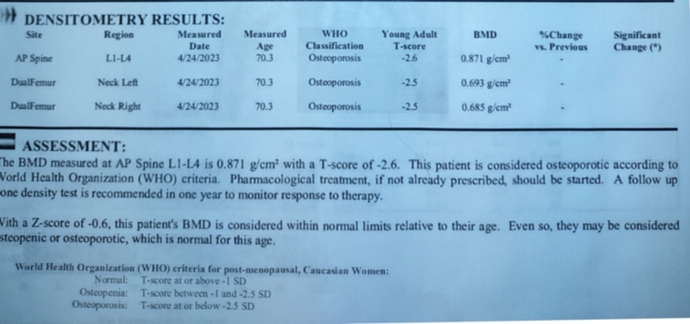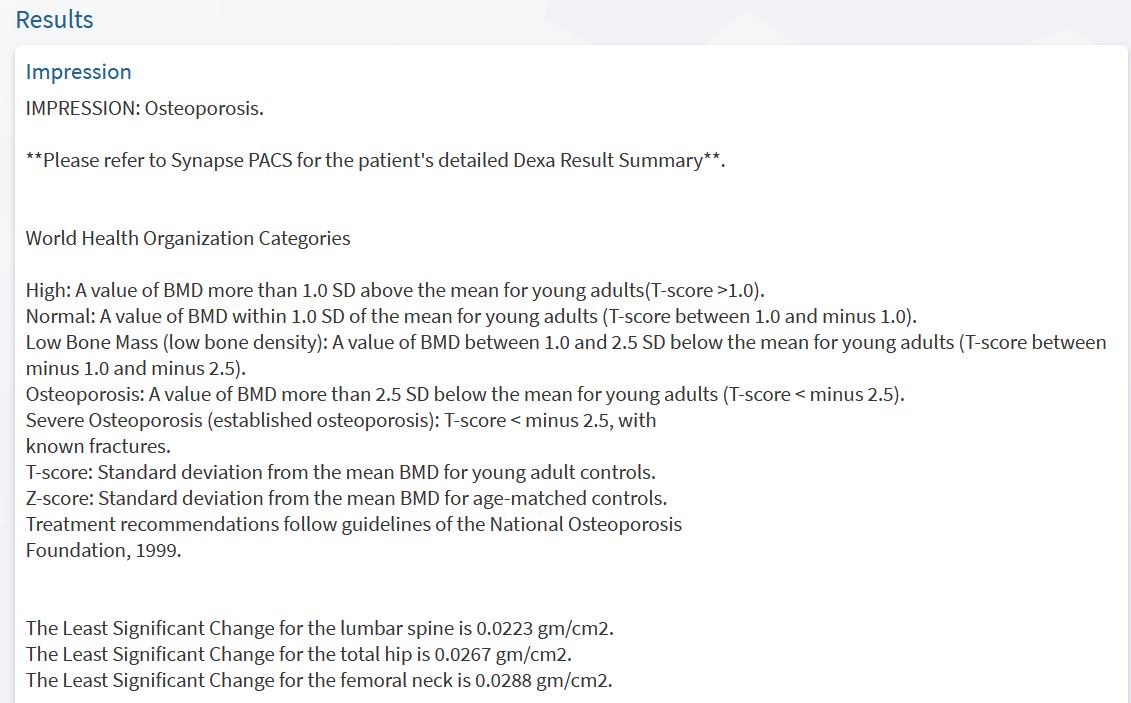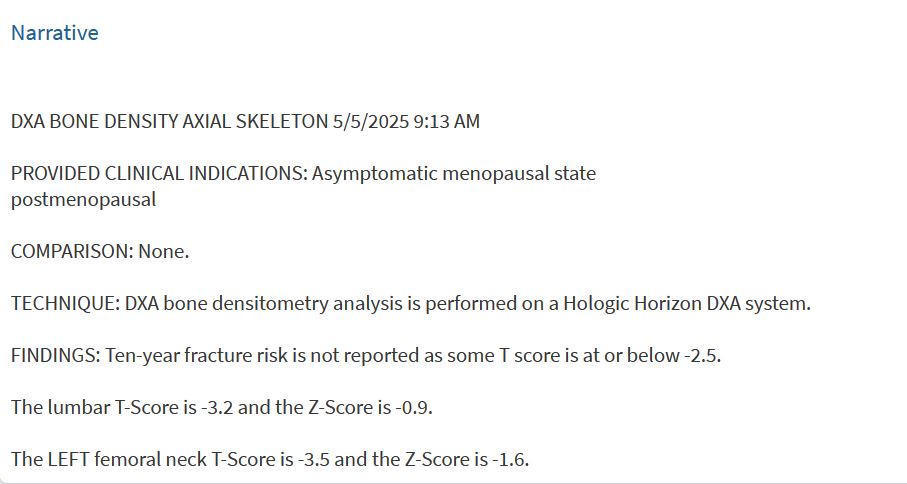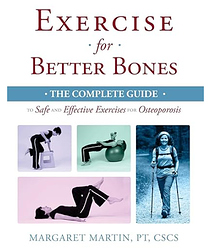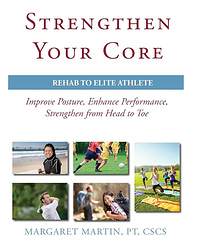Okay, brace yourself for a lengthy reply…
T-scores reflect how a subject’s bone mineral density differs from that of a young healthy woman for comparison (30 yr old I think?). It represents how many standard deviations (a common statistical metric) by which the subject’s bone density falls short of that hypothetical young person.
Anything between -1.0 and -2.5 standard deviations is deemed “osteopenia.” Anything farther than that (i.e., more negative than -2.5) is deemed to be “osteoporosis.”
So yes, your previous scan indicated you were right on the border line between osteopenia and osteoporosis. And the more recent scan indicates some additional deterioration has taken place when assessed by this metric.
However, a z-score compares you to the typical (Caucasian? note: racial differences provide different reference groups) woman of your age - rather than to that hypothetical young 30yr old. And as you can see, your z-scores are “smaller” (i.e., less negative). Which isn’t surprising because virtually all 70 yr old women have lower density than a 30 yr old, so you are not as far off when compared to your 70-yr old colleagues. But still, yes, you have lower bone mineral density than even others in your age cohort.
[This would be a good time to mention that bone density is only part of the story. There’s also bone quality which DEX scans do not capture. But that’s a whole other matter.]
And so yes, you have to be extra careful with strength and balance given that your femur has a lower density than would be typical of 70 yr old Caucasian women (actually, the femur’s “neck” which is the part of the leg bone that rests within the pelvis). Yours is somewhat more porous, so it has less density.
What to do? Well, there are things to do and things to avoid…
First, avoid taking calcium supplements. There are compelling studies from many sources that indicate that supplemental calcium presents more risk of calcified arteries than it does of restoring bone density. Also, don’t fall for “strontium” supplements marketing. They make DEXA scans look better (because they show up in the scans) but they do not actually enhance bone mineral density.
Dietary calcium, however, is very important. Food-based calcium gets absorbed slowly (the body can only absorb so much into bone and teeth at a time). And that’s your best chance of getting proper calcium levels without overloading. Ideally, 1200 mg/day for a senior aged woman. Say cheese?!
Also, Vitamins K2 and D3 are essential to properly absorbing dietary calcium - so those supplements become even more important for a subject with osteoporosis (or osteopenia).
And perhaps most importantly, strength (= load-bearing) exercise is the single best way to promote bone density maintenance. But you must be mindful of proper form - especially if you’ve had any previous fractures over the years.
On this front, I highly recommend books (and YouTube videos) of Margaret Martin, a Canadian physical therapist who specializes in exercises expressly designed for clients with osteoporosis. Her online videos are well worth watching as she has great explanations and a soothing knowledgeable demeanor.
I know from your many earlier posts that you are extremely diligent and focused on improving your health through diet and exercise. Please do NOT worry excessively about what these DEXA scans are telling you. It’s important information. But you have not been sentenced to unavoidable bone fractures.
It’s certainly great to know what’s happening, since osteoporosis is a problem that is extremely common yet usually left undetected until actual damage is done. You’ve gotten the care of a doctor who is focused enough to make sure you got such diagnostic scans.
Now relax a bit, get yourself up the learning curve about the SAFE ways to address your situation, and apply that great energy and focus on ways to prevent your bone density issue from worsening beyond what can be controlled.
One more thing … the actual risk of having a fracture (assuming you haven’t had one) given your t-scores is still perhaps around 15% to 20% over the next 10 years (assuming a few other factors). Definitely check out https://frax.shef.ac.uk/FRAX/ to learn more. Regardless, while this risk is not insignificant, with care and attention it’s still more likely not to happen (e.g., 80% to 85%) than a fracture is to happen. Your figures will differ based on other risk factors so check out that FRAX link above.
Best wishes 
[EDIT 5/14/25: I edited my post above to correctly reference “strontium” as opposed to “bromide” as I had previously. Apparently I had a brain fart while writing the post above and cited the wrong thing. My apologies!]

